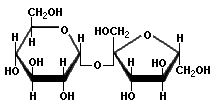 Index
Index

A practical guide for staying fit and healthy even when you have a desk job.

Many aspects of our physical well-being depend on the genetic traits that we inherited from our parents, but with knowledge and determination we can improve our stamina and decrease our chances of getting sick regardless of our genetic makeup. Three key factors to good health are nutrition, sanitation, and exercise. Here you will find information about the chemical components of food, how much to eat, and sanitary practices that can prevent disease. This knowledge can guide you toward choosing foods that are good for your body and keep you in good health. You will also find an exercise program that will strengthen your muscles and your cardiovascular and pulmonary systems in just 30 minutes per day. The main causes of premature death are heart disease, cancer, stroke, and diabetes. The risk of these diseases is increased substantially by poor diet, smoking, excess body weight, and physical inactivity. It is up to you to make the right food choices and the lifestyle changes that will assure a healthier future. You can be happier and achieve your objectives in life more easily when you are healthy and physically fit.
Our bodies are made from the foods that we eat. All foods consist of proteins, fats, carbohydrates, trace nutrients, and non-digestible components, such as fiber. A varied diet with the right proportion of nutrients is the foundation of good health. The proportion and quantity of the foods that we eat determines whether we will be healthy or develop nutritional diseases. Excessive or disproportionate consumption of some foods can create imbalances that will eventually undermine our health and promote obesity, cardiovascular problems, diabetes, and other disorders. People who are strict vegetarians and eat no animal or dairy products (vegans) have a high risk of malnutrition, specially when pregnant or lactating. Inadequate protein intake causes a form of malnutrition called kwashiorkor. Low levels of minerals or vitamins can cause diseases such as anemia, goiter, pellagra, rickets, scurvy, and mental retardation. The use of daily vitamin/mineral supplements and fortified foods has greatly reduced the incidence of many dietary deficiency diseases in the general population, but vitamins and minerals, like all components of our diet, must be taken in the right proportion. While low levels of vitamins are bad, high levels can also be dangerous. Vitamin A, for example, is necessary for healthy eyes and skin, but at high concentrations it is toxic and can cause birth defects. Variety, balance, and moderation are very important in nutrition.
Besides selecting the right foods, a secondary aspect of nutrition is to balance the amount of food eaten with the level of activity. Eating less than necessary will cause weight loss, whereas eating more will result in weight gain. This is why nutrition and exercise must always be considered together.
The three major components of food, known as macronutrients, are proteins, fats, and carbohydrates.
Proteins are chemical chains of various combinations of 20 naturally-occurring amino acids. Muscle tissue consists mainly of proteins. The body breaks up dietary proteins into amino acids that are used for tissue repair, to produce many of the hormones and enzymes that regulate metabolism, and as a source of energy. The chemical processes of the body require nine of these "essential" amino acids in the diet. Other amino acids may be synthesized from these nine. Unlike animal proteins, plant proteins may not contain all the essential amino acids in the necessary proportions for good health. Vegetarian diets must contain the right balance of grains and legumes to prevent dietary deficiency diseases.

Fats belong to the group of chemicals called lipids which are insoluble in water but soluble in organic solvents. Fats are important structural constituents of cells and they are precursors for many substances in the body. Fats are also metabolized as a source of energy. Cell membrane behavior and cell signaling in all tissues of the body are highly dependent on the lipid constituents of cells. Over half of the weight of the brain consists of lipid components. Triglycerides are the major component of food fats. Triglycerides consist of one glycerol molecule and three fatty acids typically containing 12 to 22 carbon atoms. They are classified as saturated, monounsaturated and polyunsaturated based on the amount of hydrogen in the chemical structure of the component fatty acids.
Each point of unsaturation, indicated by a double bond between carbons, can have a Cis or a Trans configuration which affects the shape of the molecule and its biochemical properties. A saturated fat does not have double bonds and cannot accept any additional hydrogen atoms. In general, unsaturated fats are liquid and saturated fats are solid. Most vegetable oils have a higher proportion of unsaturated to saturated fats than animal fats. Some unsaturated fats, called "essential fatty acids" (EFA), are necessary for the development and maintenance of the brain and eyes. Hydrogenation is a commercial chemical process to add more hydrogen to natural unsaturated fats to make them solid. Partial hydrogenation has the side-effect of transforming a portion of the natural Cis fatty acids to Trans fatty acids which can have harmful health effects.
| Cis configuration | Trans configuration |
|
Hydrogenation process. Click here for more information about fats. |
Carbohydrates are simple sugars or polymers of simple sugars called polysaccharides or complex carbohydrates. Dietary carbohydrates are metabolized to provide energy and increase the reserves of fat in the body. No dietary carbohydrates have been determined to be "essential" for human nutrition, although cartilage and some secretions have carbohydrate polysaccharide components, and it is known that sugars help proteins fold properly and remain stable. Carbohydrates, like the starch in potatoes, are easily digestible and rapidly increase the sugar level in the body. Complex carbohydrates like those in whole grains are digested more slowly. Cellulose, which is a polymer of glucose, cannot be digested by humans. The Glycemic Index of a food is a measure of how fast the food increases the blood sugar level compared to a dose of glucose.


Trace nutrients or micronutrients consist of phytochemicals, vitamins and minerals which are necessary for many functions of the body at the molecular level. Micronutrients are found in a variety of foods. For example, liver and red meats are good sources of iron. Seafood provides more iodine and copper than meats from land-based animals. Green vegetables are a good source of magnesium and antioxidants. Milk is a good source of calcium and phosphorus. Bananas are rich in potassium.
Non-digestible components such as fiber and cellulose are not nutrients, but they create bulk that helps to clean the intestines and moderate the absorption of nutrients. A portion of the ingested fiber is fermented by microflora in the intestines and converted into short-chain fatty acids that can be metabolized. Refined foods have a lower content of fiber than whole foods. White wheat flour, for example, has less fiber than whole wheat flour because the outer shell of the wheat grains is discarded in making the white flour.